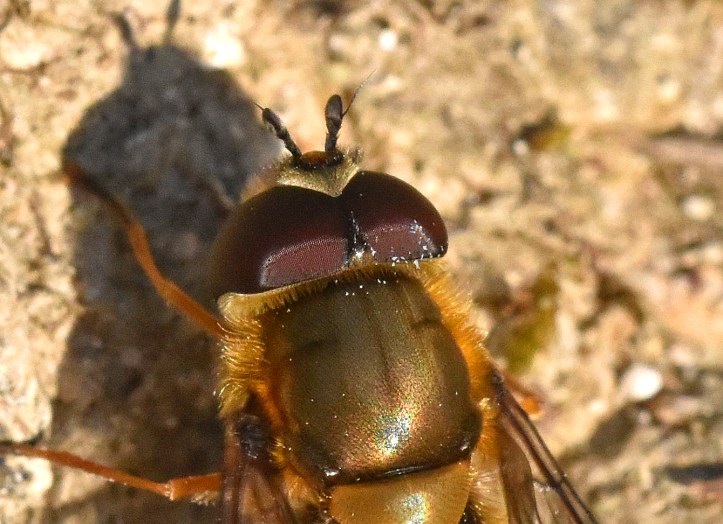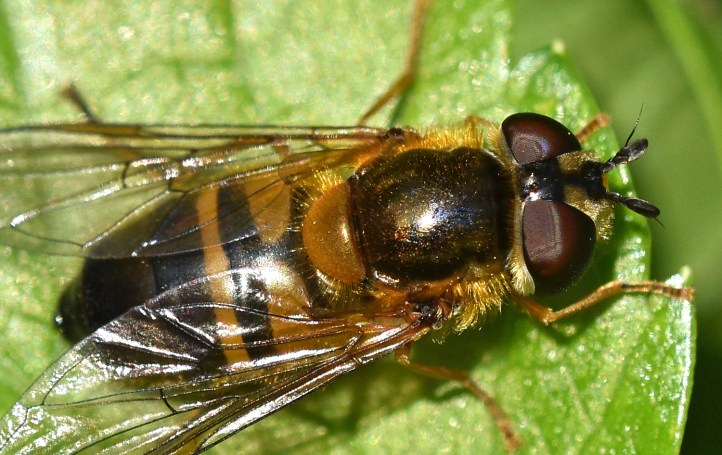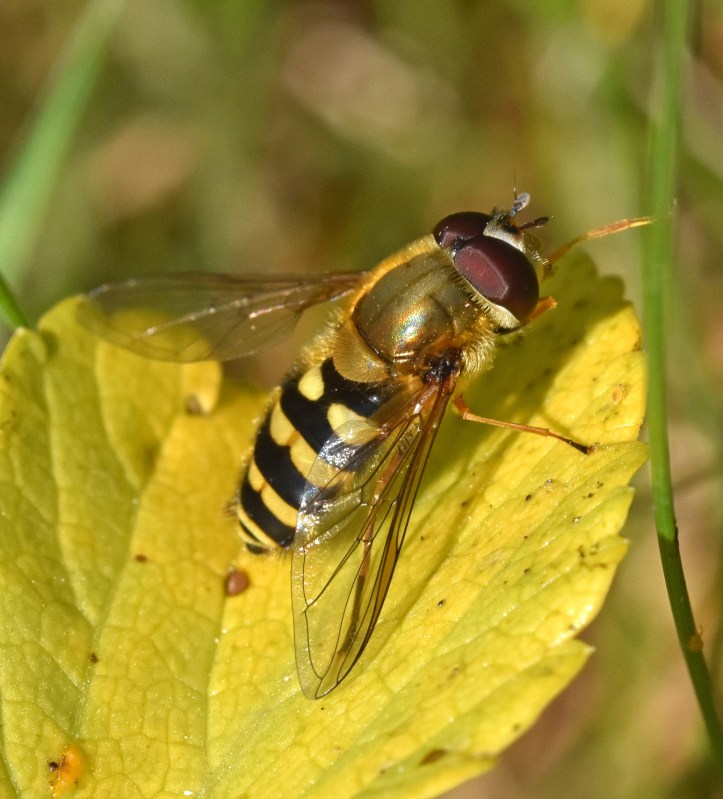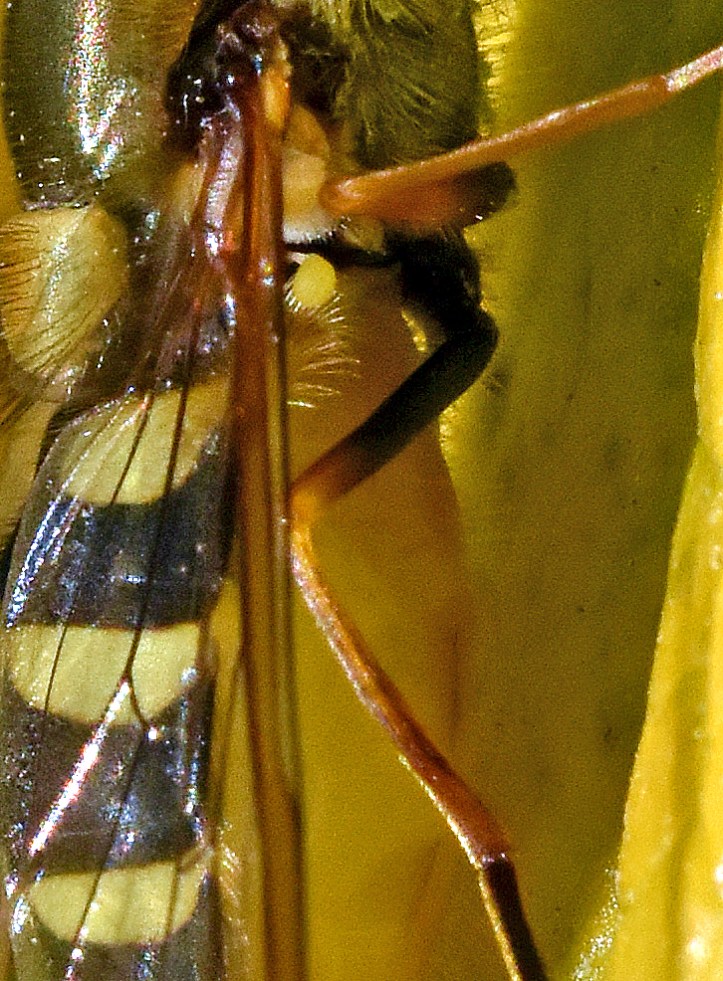You have to be a pretty good photographer – well phenomenally good actually! – to try and identify this species of hoverfly via a photograph (Syrphus sp. maybe S. ribesii). The reason being, that there are three very similar species in the UK, which really need a microscope in order to separate them! But maybe we can try using these photographs I took!
The first thing to establish is what sex is it. If the large red, compound eyes meet – i.e. are partially in contact with each other – on the top of the head, then it is a male (see below). One way to separate out one of the species (S. torvus) is to see if the eyes are hairy! Hairy eyes? Well yes, but would they show up on a photo like this? Probably. There are supposed to be “eyes with numerous hairs, in male long and dense”, so I guess this is not S. torvus? But the magnification may not be sufficient.

As an aside, here is a picture of another hoverfly species (Epistrophe eligans) – since I don’t have a photo of a female Syrphus ribesii – showing what it looks like when the eyes are well separated (below). The eyes of male hoverflies are usually larger than those of the females, and the dorsal part of the males’ eyes is specialized for the detection of females! The technical terms for these two types of eyes are: holoptic (male) and dichoptic (female) compound eyes

The next feature to look for is the hind femur. That’s the thickest section of the leg nearest the body. Female Syrphus ribesii can may be distinguished from the other two common species (Syrphus vitripennis and Syrphus torvus), by having entirely (well mostly) yellow femorae (hind legs). But if as in this case, it is a male, then it has got to have at least some black hairs on the yellow end nearest the tibia. But these hairs are absolutely tiny! In most of my shots, the end leg is inconveniently placed beneath the wings, so it is hard to see through the transparent wing membrane!

I managed to get a few shots from the side (below) where the hind femur is visible. But it is way too dark, and the hairs are much too small to see!

Even on a severely cropped shot (below), it impossible to see whether or not it has any tiny hairs . I forgot to ask it! You really do need a microscope for this feature!

There is one other feature which can be used to separate S. ribesii from S. vitripennis, which is whether the 2nd basal cell – an area on the wing bounded by wing veins – is entirely or partially covered with microtrichia. i.e. really tiny hairs! Even smaller than the ones on the legs! Well I did manage to get what I thought was a nice shot of its wings, but when I blew it up (i.e. cropped it) the detail was not very good (below). The wing cell looks pretty smooth, but the microtrichia are tiny, so I think it is impossible to say.

So, if it is this difficult for us to tell them apart, I wonder how they manage?! Do they go round checking to see whether or not they have tiny black hairs just above the knee? I don’t think so! These are features which we use; a system taxonomists have devised, in order to tell them apart. We can be quite sure hoverflies don’t need a taxonomic key to tell each other apart! They will know each other instinctively – using certain cues – and they will know who is one of them, and who is not. They might even smell (pheromones) or taste differently to each other. As well as this, they may have a host of other differences in terms of their behaviour, where they like live (habitat), what they like to eat (especially as larvae), and so on.
These taxonomic features enable us to tell similar species apart, but they would probably seem very crude, and do doubt hilarious to hoverflies!
References
Ball, S., & Morris, R. (2015). Britain’s Hoverflies: A Field Guide-Revised and Updated Second Edition. Princeton University Press.
Lunau, K. (2014). Visual ecology of flies with particular reference to colour vision and colour preferences. Journal of Comparative Physiology A, 200(6), 497-512.